Planting tomatoes in a greenhouse is the main way to grow crops in the middle zone and in the north. In the south it is preferable to cultivate them in open ground.
Photo of seedlings in a greenhouse
| Content:
|
Ripening times for different varieties
The ripening period is considered to be the time from full germination to technical ripeness of the fruit. According to the ripening period, tomatoes are divided into:
- ultra-early - technical ripeness occurs in 75-80 days. These are small-fruited tomatoes, their yield is small;
- early - 80-100 days. There are both small and large-fruited ones. The harvest directly depends on the weight of the fruit. The larger the tomatoes, the lower the yield;
- mid-season - 100-120 days. Productive, there are both small-fruited and large-fruited varieties;
- late - 120-160 days. Mostly large-fruited.
The ripening of tomatoes is affected by the weather, so the timing may vary by 5-7 days.
Tomato varieties for planting in a greenhouse
In the central regions, all varieties except the late ones are grown in greenhouses. In the north, only varieties are planted; in the middle zone, hybrids also grow well in protected soil.
Ultra early and early varieties
- Sanka- ultradet, fruits weighing 60-70 g (in the Central Black Earth regions it is grown in open ground).
- Picket — zoned for Siberia. Productive, small-fruited
- Successful - determinant, low-growing main crop on the lower clusters. The fruits are small, weighing 50 g.
- Taiana - determinant, low-growing, large-fruited.Fruit weight 200 g.
- Early love - determinant, but requires garter. Tomatoes of excellent taste weighing up to 100 g (average 80-95 g).
- Hybrid Resource - indeterminate, fruit weight up to 150 g, long-term fruiting. The taste of the fruit is worse than that of the varieties. Ripening of tomatoes is 95-98 days after full germination.
Mid-season tomatoes
- Alyona. Productive, resistant to adverse weather conditions. Fruits, depending on the weather, weigh 100-200 g.
- Bull's heart. Large-fruited determinate variety with an average fruit weight of 200-300 g. For salad purposes.
- Fireworks. Indeterminate, mid-ripening, fruits weighing 200-300 g. Productivity is high.
- Dimensionless. Indeterminate, fruits weighing 300-400 g, slightly ribbed.
Late tomatoes
For seedlings, the seeds of these varieties are sown at the earliest possible time and planted in the greenhouse as early as possible, otherwise the crop will not have time to ripen.
- R-20+Beauty King. Indet, grows well in cold and rainy weather. The fruits are first golden, and as they ripen on one side they first become blue and, when fully ripe, black. Fruit weight is 150-300 g (depending on the weather).
- Virginia sweets. Tall indet orange in color. The fruits are very large (up to 500 g) and sweet. The variety is not easy to find.
- Grandma Vinay. Tall. The fruits are orange with yellow streaks. The taste is excellent, fruit weight is 300-400 g.
Of the exotic varieties, yellow, white, blue, green tomatoes and various “striped” tomatoes are planted in greenhouses. The fruits have an unusual appearance, but they grow well and produce a good harvest in closed ground.
- Emerald pear. Tall, mid-late tomato. The fruits are pear-shaped and remain green even when ripe. Fruit weight 150 g.
- White Queen. White-fruited mid-season indet.Fruits weighing up to 300 g. The taste is not for everyone, inferior to red-fruited tomatoes. Tomatoes have a lot of juice.
- Blue. Tall indeterminate tomatoes. The fruits are blue in technical ripeness, purple in biological ripeness, with an average weight of 80 g. For canning.
- David's Pineapple. Mid-season large-fruited indet. The tomatoes are yellow, orange when biologically ripe, weighing 300-400 g. The fruits contain a lot of water. The taste is for everyone with a specific fruity taste.
- Sweet Cascade. Mid-season indeterminate tomatoes. The fruits are elongated and look like small peppers. The tomatoes are red with orange twisting stripes. Average weight 50-70 g. Designed for pickling.
In the southern regions, to obtain an early harvest, early-fruiting tomatoes are grown in a greenhouse, after which it is freed up for more heat-loving crops (eggplant, melons, watermelons). Mid-season and late varieties are practically not cultivated in greenhouses, since the crop is very hot there. Even with the doors and windows fully open, the temperature is still 7-10°C higher than outside. At temperatures above 32°C, the pollen becomes heavy, and above 35°C, it becomes sterile, pollination becomes difficult and the yield decreases.
Crop rotation in a greenhouse
Tomatoes, along with other greenhouse crops, grow in a greenhouse for many years. Therefore, their crop rotation is difficult.
Good precursors for the crop are cabbage, greens, and onions. But, since they are not cultivated in greenhouses, it is advisable after harvesting the tomato tops sow green manure: mustard, oilseed radish, phacelia, rye.
In the spring, before planting tomatoes, seedlings of cabbage, lettuce, and onions are grown in greenhouses. They are also good predecessors.
When growing without green manure, it is better to plant tomatoes after cucumbers.It is not advisable to plant them after peppers and eggplants, since these plants belong to the Solanaceae family and they have common diseases.
Soil preparation
In conditions of protected soil and limited crop rotation, it is simply necessary to apply manure in the fall. This especially applies to poor soils. On chernozems, manure can be applied every other year. Organic matter is added in the fall for digging:
- if fresh manure, then 2-3 buckets/m2,
- if half-rotted - 5-6 buckets per m2.
- compost is applied 4-6 buckets per m2.
If there is no organic matter, then you can use leaf litter. It is taken in the forest or meadow along with the surface layer of soil. But litter, especially coniferous litter, strongly acidifies the soil, so either lime fertilizers or ash are added at the same time.
Ash is preferable to lime, as it acts much softer. The ash of coniferous species contains more phosphorus, and that of deciduous species contains more potassium. Application rate 400-500 g/m2. When using ash, no other phosphorus-potassium fertilizers are used. The earth is dug up on the bayonet of a shovel.
If fertilizers were not applied in the fall, then in the spring they are applied during planting. On poor soils, add either completely decomposed manure or compost (half a bucket per hole) or ash (1 cup) directly into the holes. Compost and manure contain not only nitrogen, but also phosphorus and potassium, so tomatoes will have enough for the first time. Ash and manure should not be used together.
Fresh manure cannot be used in the spring, since the tomatoes will go into the tops and will not bloom for a long time; in the middle zone you may not even wait for flowering.
Timing for planting tomato seedlings in a greenhouse
Planting tomato seedlings in a greenhouse is possible in the early stages. The main indicator is the weather. Planting tomatoes is possible when the daytime temperature is 7-10°C.In the north it is the end of May, in the central regions - May 5-15, in the south - mid-late April. However, if the nights are very cold, then the seedlings are not planted, and if they are already planted, they are covered with straw and, additionally, covering material.
In addition to temperature, when planting seedlings, their age is taken into account. Tomatoes with 4-5 leaves can be planted in a greenhouse. Usually, early varieties of tomatoes are planted when the first cluster appears; they are not kept on the windowsill longer, otherwise they will outgrow.
Medium and late varieties are planted at the age of 7-8 true leaves, but it can be done earlier if the weather permits.
The approximate age of early tomatoes suitable for planting in a greenhouse is 50-60 days, middle and late 70-80 days. However, this is very conditional.
If the tomatoes are overgrown, they are planted regardless of age. The culture in greenhouses and under cover tolerates cold weather without problems, the main thing is that the soil is sufficiently warmed.
Greenhouse tomato planting scheme
In greenhouses, either 2 beds with one wide aisle or 3 beds with 2 aisles are set up. In wide beds, tomatoes are planted in a checkerboard pattern. On narrow ones - in one row.
Tall varieties planted with a distance of 60-80 cm between bushes and 1 m between rows. When planting in a checkerboard pattern, the distance between plants is 50-60 cm. When grown in a three-row greenhouse, tomatoes can be planted at a distance of 40-50 cm from each other, and the growing stems can be directed in opposite directions, tying them to trellises located above the side aisles.
Medium height tomatoes are planted at a distance of 40-50 cm from each other and a distance between rows of 70-80 cm.
short tomatoes are planted at a distance of 30-40 cm between plants and 50 cm between rows.When planting in a checkerboard pattern, the distance between the bushes is 40 cm.
Planting seedlings in a greenhouse
The day before planting, water the tomatoes well so that the earthen ball is moistened. Wet soil does not crumble and the roots are less damaged. 2-3 lower leaves are removed, since the plants are buried 10-15 cm when planting. Tomatoes are planted in the afternoon, since at this time the root system functions more actively.
Tomatoes are planted in cloudy and cool weather. The optimal temperature in the greenhouse is 12-15°C. If it’s hot in the greenhouse, then all the doors and windows are opened, and the newly planted seedlings are covered with insulation in the late afternoon. If you plant tomatoes in the first half of the day, the plants may wither due to strong evaporation of moisture from the leaves. They, of course, will not die, but they will take root much longer.
Before planting, the holes are well watered several times with warm water. If the roots of the seedlings are entwined around the earthen ball, then they are removed - this is ballast, which will only interfere with the normal development of the root system. In normally developed seedlings, the main root stands out; when planting, it is pinched by 1/3. After planting, tomato seedlings are watered generously.
Seedlings are planted in a greenhouse in two ways:
- Vertical. Well-developed, strong seedlings are planted.
- Bent over. Used for slightly overgrown plants.
Elongated and thin seedlings are not planted in the greenhouse. If you don’t have good seedlings of your own, it’s better to buy them than to plant weakened ones. They require more attention, but the yield is much smaller, and they begin to bear fruit 15-20 days later, which is unacceptable for the middle zone. Stretched seedlings are planted only when it is necessary to preserve a valuable variety.
Early planting of tomatoes
To obtain early produce, insulated beds are prepared in the greenhouse. Dry leaves, straw, and rotted (not fresh!) manure are placed in a trench dug along the entire length of the bed.
Everything is covered with earth on top and boiling water is poured over it several times. After 3-4 days, check whether the soil has warmed up. If the soil is warm, then the seedlings are planted; if it is not yet warm enough, then they are poured with boiling water again. To speed up the warming of the soil, it is covered with black film.
The dates for planting on a warm bed in the middle zone are from April 20, in the north - from mid-May.
This method is not suitable for the southern regions, since in summer tomatoes on such soil, and even in a greenhouse, will be very hot. When the roots overheat, tomatoes die.
Caring for tomatoes after planting
After planting in the greenhouse, the tomatoes must be covered. Firstly, there are still negative temperatures at night, and the crop can freeze, and it is not always warm during the day. Secondly, tomatoes take root faster and begin to grow when both roots and stems are warm. Thirdly, the covering material shades the tomatoes from the bright sun. When the temperature in the greenhouse is 13-15°C, the covering material can be removed, but if the nights are cold, the tomatoes are covered.
Under the shelter of a greenhouse, tomatoes can withstand frost without problems, but at sub-zero night temperatures, the plants are additionally insulated with straw, dry leaves, and hay.
Immediately after planting, tomatoes do not need to be tied up. They are given the opportunity to take root properly and only then tied to the trellis.
After watering tomatoes when planting, they are not watered for 10 days. In this case, the root system will actively grow deeper and wider in search of water.
Planting tomatoes in a greenhouse with seeds
This method is not used in the central regions, since the tomatoes not only do not have time to produce a harvest, but even to bloom. The method is suitable for the southern regions, where seedlings are grown in closed ground in this way, which are then planted outside or planted in a greenhouse.
If tomatoes will be grown in a greenhouse in the future, then the seeds can be sown immediately in rows or in a checkerboard pattern, the distance between them is 30-40 cm. But it is better to sow in holes, since such sowing is more reliable - from several seeds something will sprout. Before sowing, the holes are spilled with warm water, after which 2-4 seeds are sown in each, sprinkled with damp soil. The crops are covered with spunbond, which is not removed until germination. Seeds germinate in 6-12 days.
After emergence of seedlings, excess plants are removed, leaving 2-3 of the strongest seedlings in one hole. Later they are seated.
If tomatoes are grown as seedlings in a greenhouse, then they are sown compactly in one place with a distance of 20 cm between plants. After 2-3 true leaves appear, they are planted in a permanent place.
Only early varieties are suitable for direct sowing in the ground. If tomatoes are grown in a greenhouse, then it is possible to sow mid-season varieties, provided they are sown immediately in a permanent place. Late varieties are not suitable for this.
Pre-winter sowing of tomatoes in a greenhouse
The method is suitable for growing mid-season tomatoes in the south and early varieties in the middle zone. In the north and northwest, such technology is unacceptable.
Sowing is carried out when the ground is frozen and the temperature in the greenhouse during the day is no higher than 3-5°C. The holes for sowing are prepared in advance, when the soil is still soft. The finished holes are not watered, leaving them dry.Sowing dates in the middle zone are at the beginning of November, in the southern regions - in the middle of the same month.
Sowing is carried out either with whole fruits or dry seeds.
With whole-fruit When sowing, take a fully ripe tomato, put it in a hole and cover it with soil. The planting site is sprinkled with fallen leaves, straw, and sawdust. In the spring, as soon as the ground thaws, the insulation is removed and the sowing area is covered with lutarsil or spunbond.
When shoots appear, arcs are placed and a temporary greenhouse is made. For the first few weeks, while the temperatures are below freezing at night, the spunbond is opened during the day, when the greenhouse is warm enough, and closed at night. Tomatoes are planted in a permanent place after 2-4 true leaves appear.
With this method of sowing, 5-30 young plants appear simultaneously in a small area.
When sowing dry seeds 3-5 seeds are sown in one hole. Seeds can be sown in furrows with a distance between seeds of 6-10 cm. The sowing site is covered with dry soil and insulated with straw.
Seeds can be treated a month before sowing. Sowing is carried out only with dry seeds. Whole-fruit sowing is preferable, since there is a greater likelihood of germination. Dry seeds are sown only when there is a lack of seed material.
Continuation of the topic:
- Growing tomatoes in open ground
- When to plant tomato seedlings in open ground
- Sowing tomato seeds directly in open ground
- How to plant tomatoes in a greenhouse and OG
- How to treat tomato diseases in a greenhouse and open beds
- How to care for tomatoes in a greenhouse
- Formation of tomato bushes in a greenhouse and exhaust gas
- How to protect tomatoes from late blight
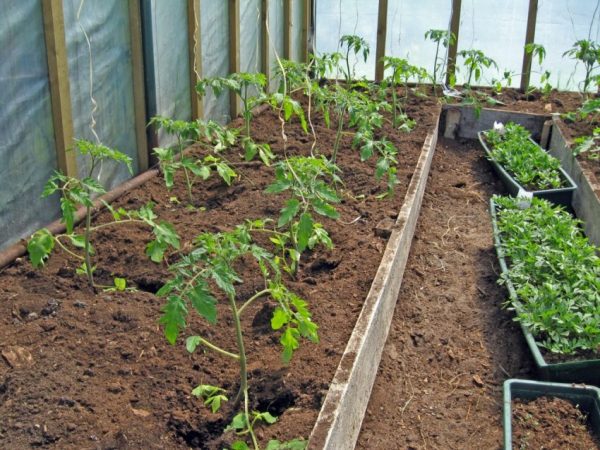
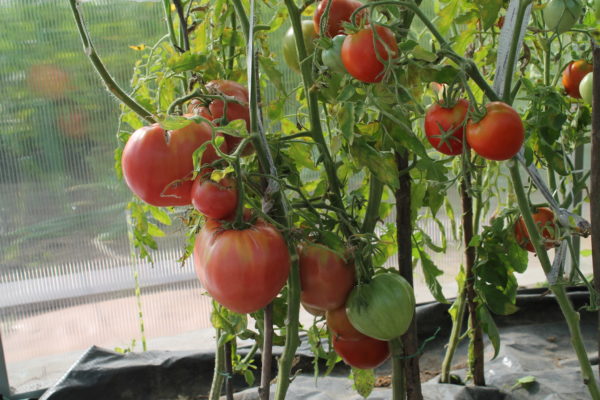
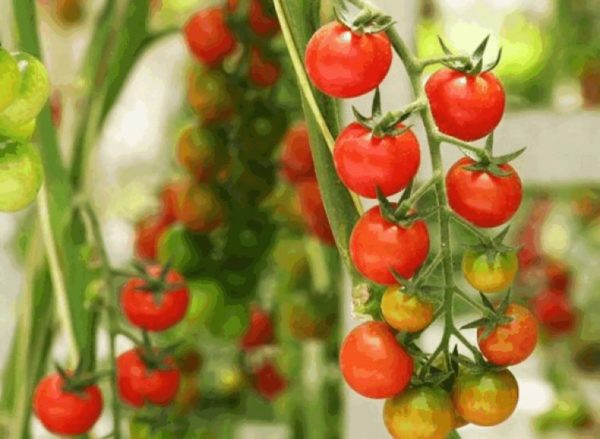
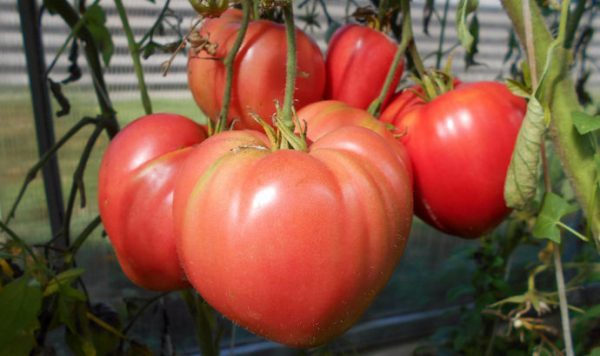
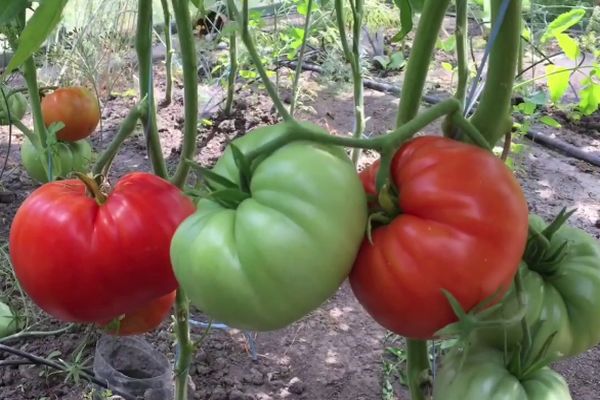
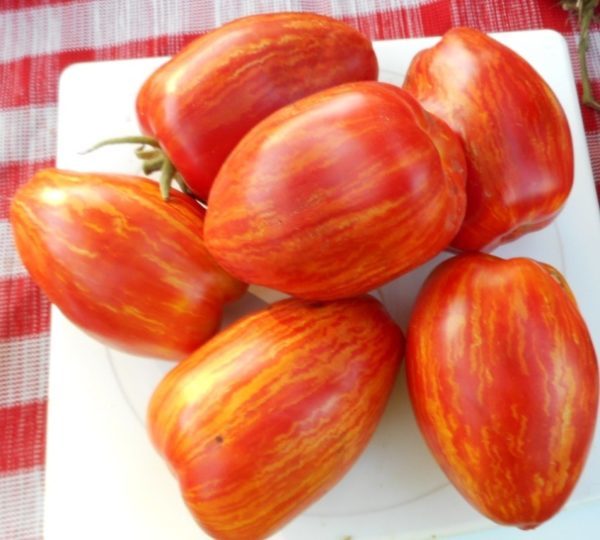
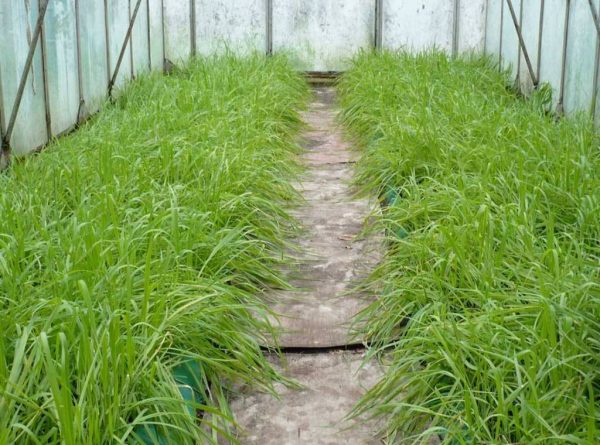
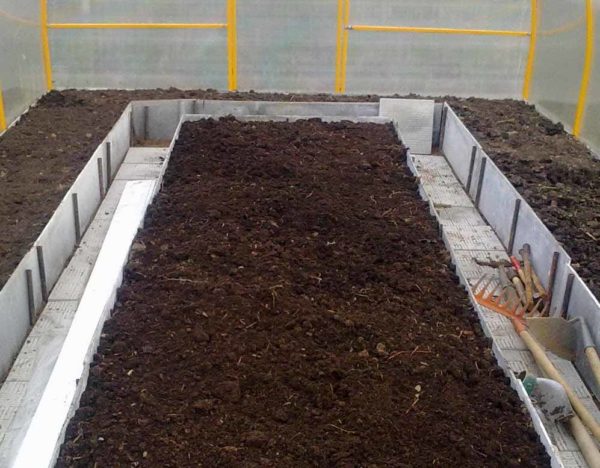
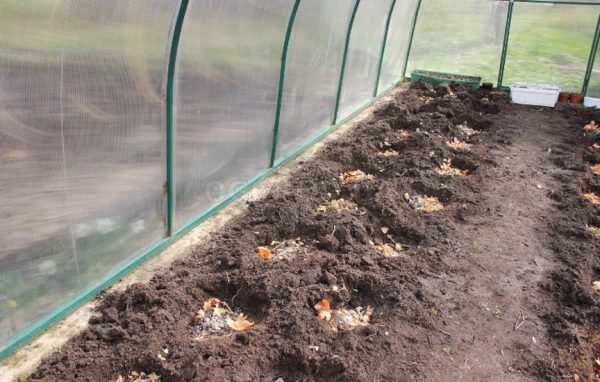
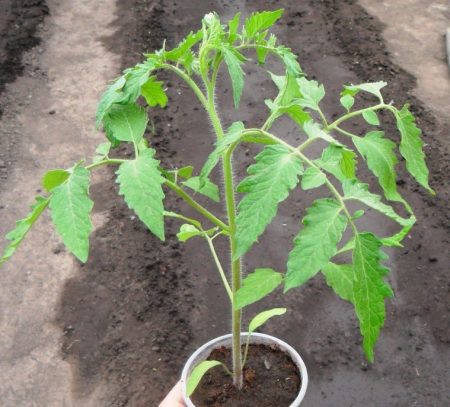

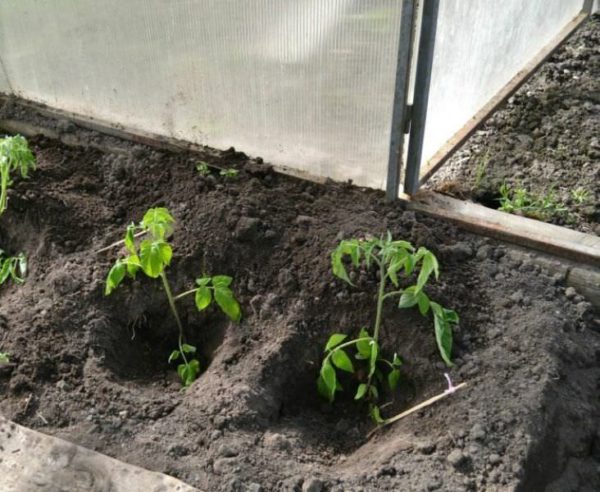
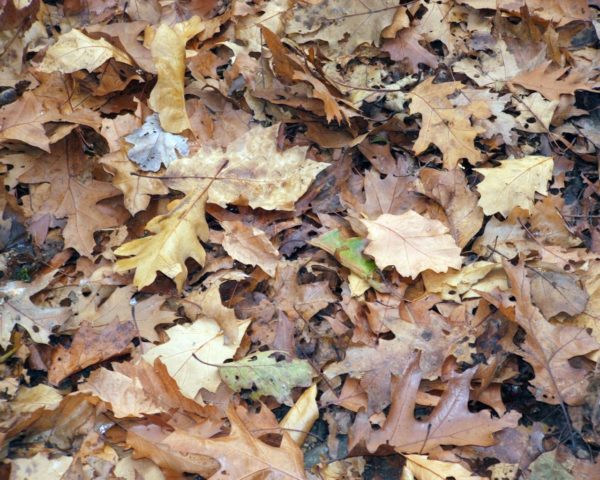

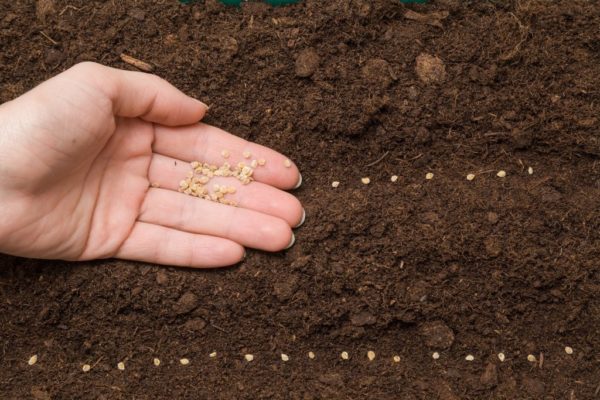
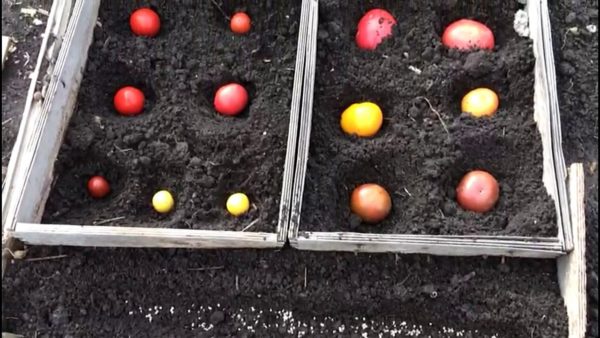


 (2 ratings, average: 3,50 out of 5)
(2 ratings, average: 3,50 out of 5) CUCUMBERS NEVER GET SICK, I'VE BEEN USING ONLY THIS FOR 40 YEARS! I SHARE A SECRET WITH YOU, CUCUMBERS ARE LIKE THE PICTURE!
CUCUMBERS NEVER GET SICK, I'VE BEEN USING ONLY THIS FOR 40 YEARS! I SHARE A SECRET WITH YOU, CUCUMBERS ARE LIKE THE PICTURE! You can dig a bucket of potatoes from each bush. Do you think these are fairy tales? Watch the video
You can dig a bucket of potatoes from each bush. Do you think these are fairy tales? Watch the video
 How our fellow gardeners work in Korea. There is a lot to learn and just fun to watch.
How our fellow gardeners work in Korea. There is a lot to learn and just fun to watch. Eye trainer. The author claims that with daily viewing, vision is restored. They don't charge money for views.
Eye trainer. The author claims that with daily viewing, vision is restored. They don't charge money for views. A 3-ingredient cake recipe in 30 minutes is better than Napoleon. Simple and very tasty.
A 3-ingredient cake recipe in 30 minutes is better than Napoleon. Simple and very tasty. Therapeutic exercises for cervical osteochondrosis. A complete set of exercises.
Therapeutic exercises for cervical osteochondrosis. A complete set of exercises. Which indoor plants match your zodiac sign?
Which indoor plants match your zodiac sign? What about them? Excursion to German dachas.
What about them? Excursion to German dachas.